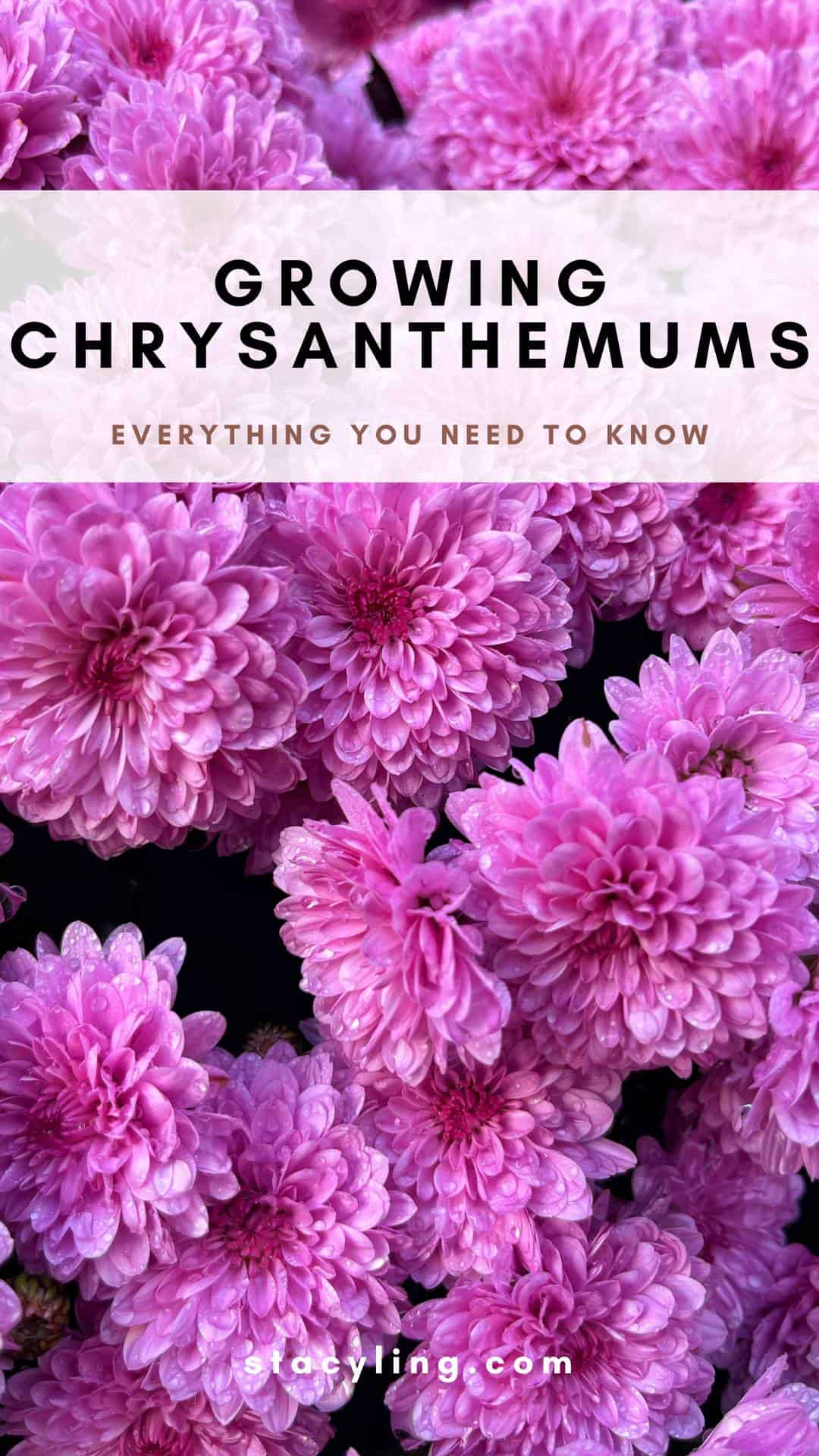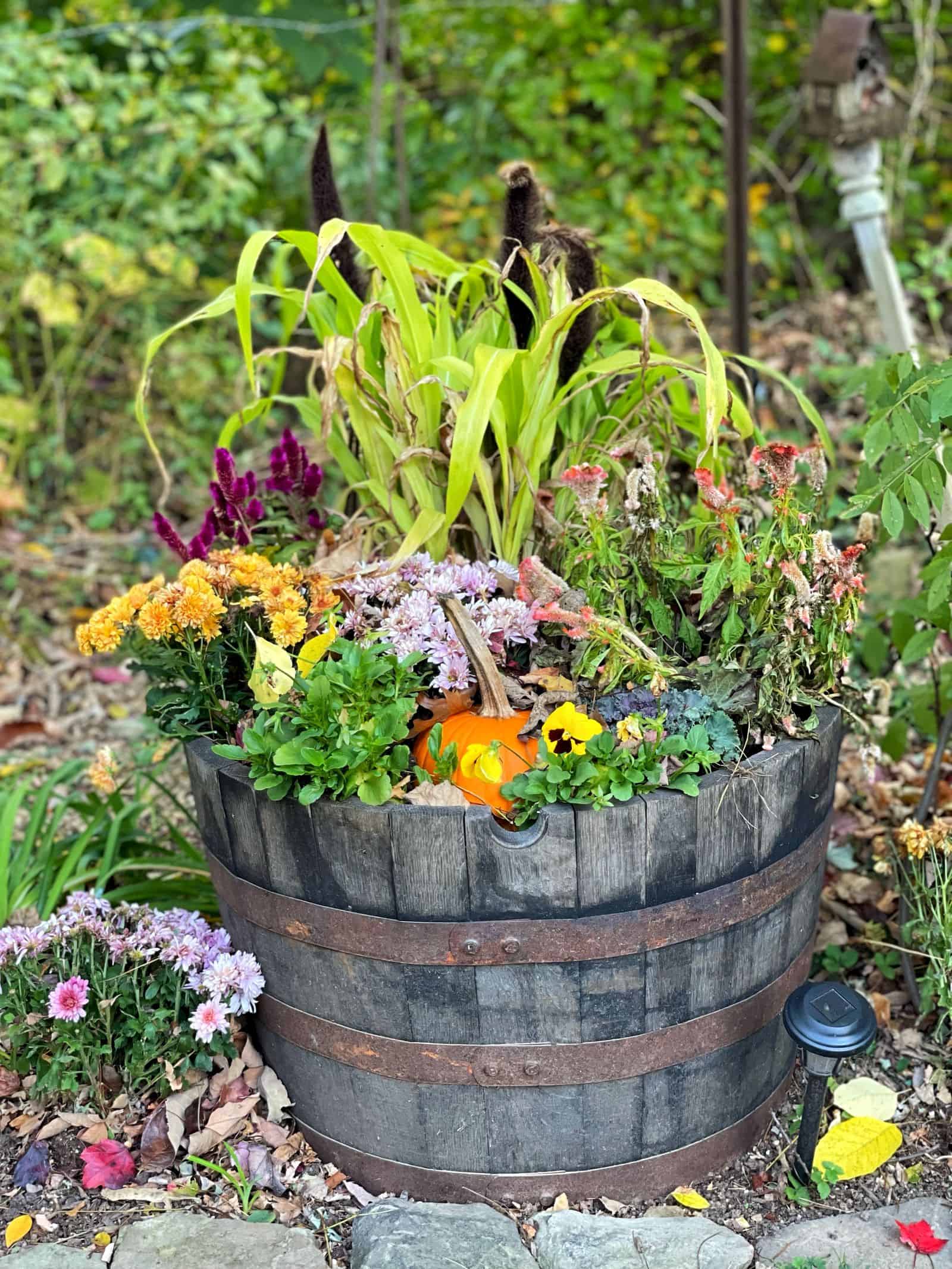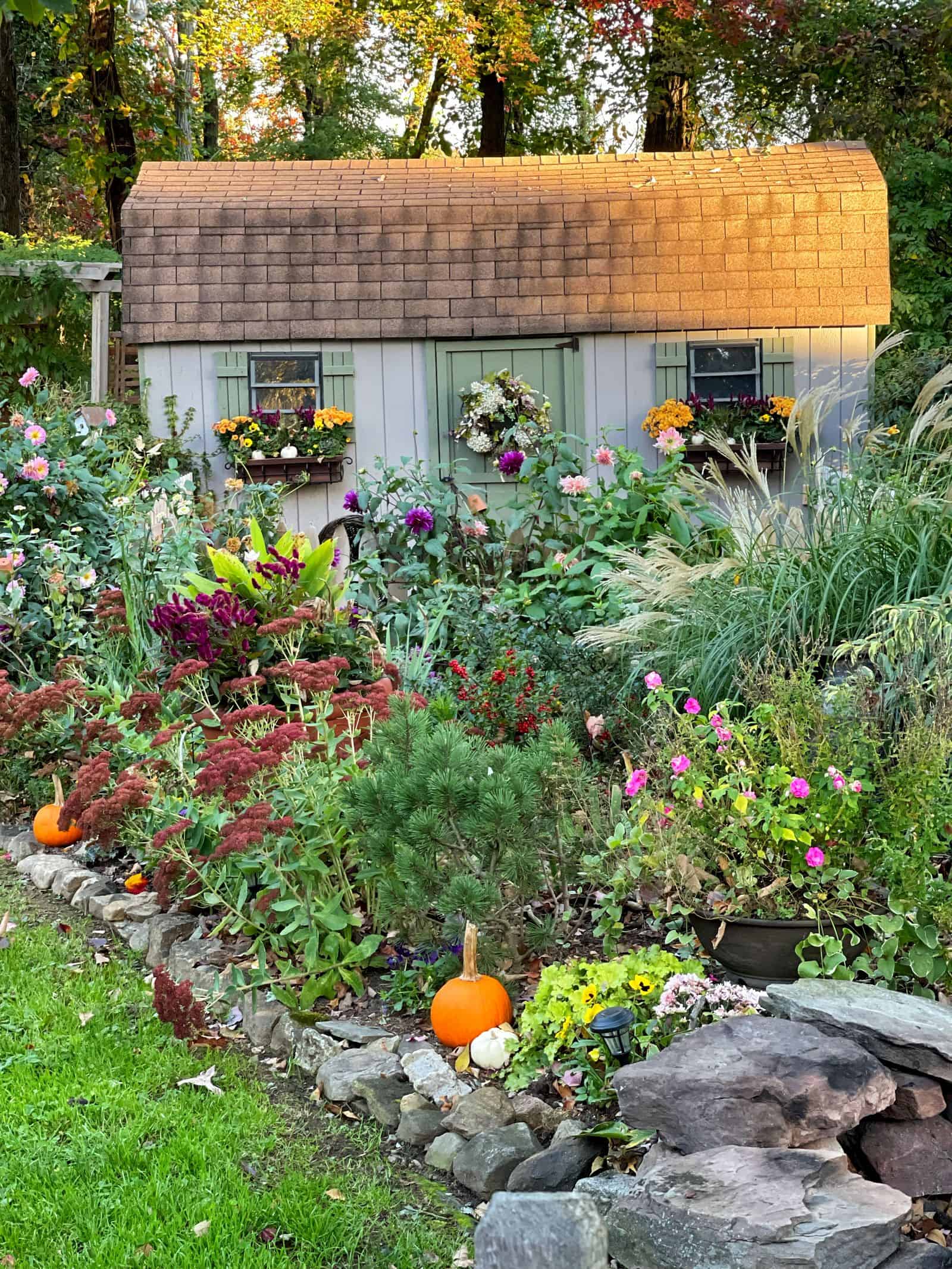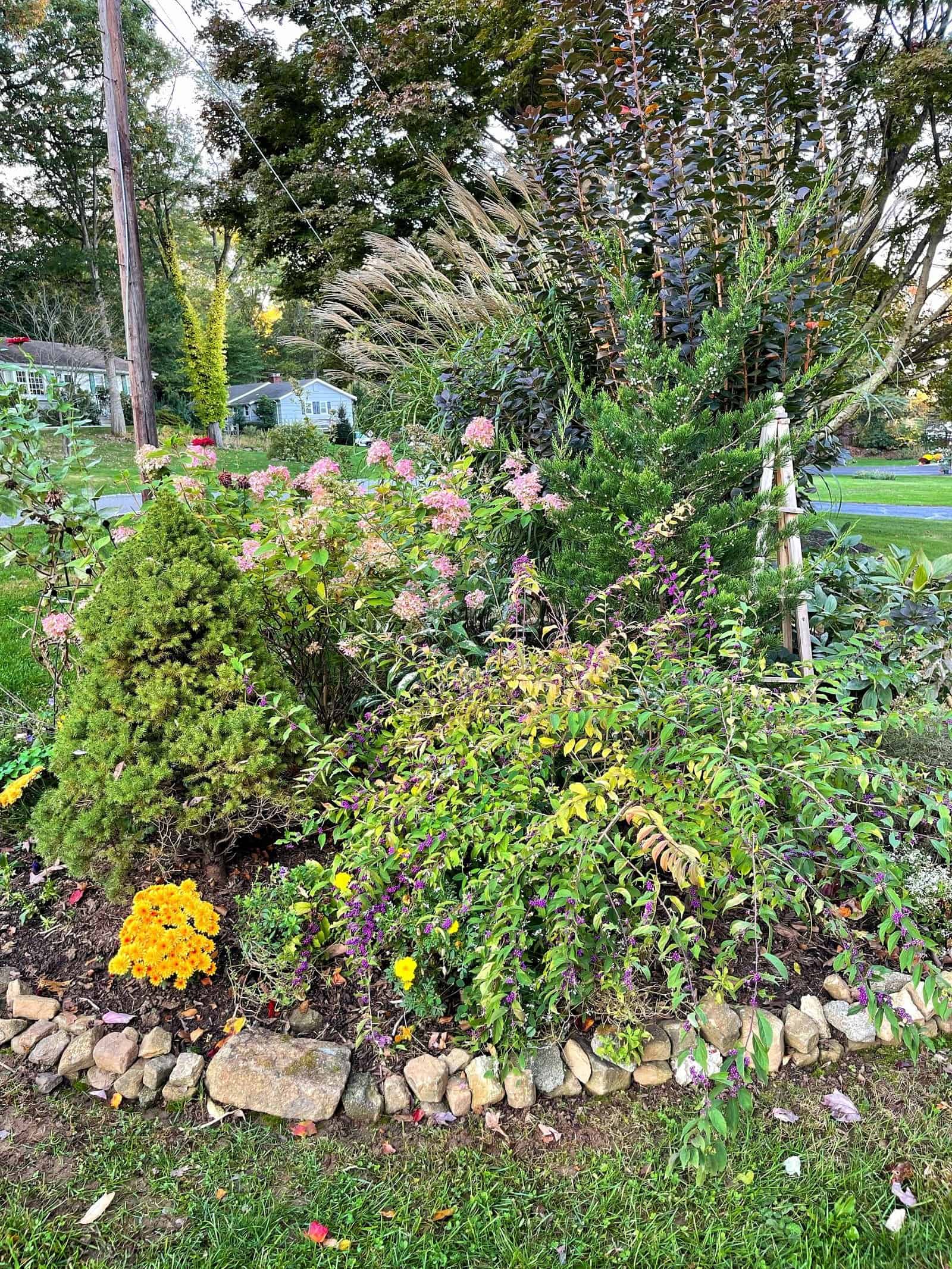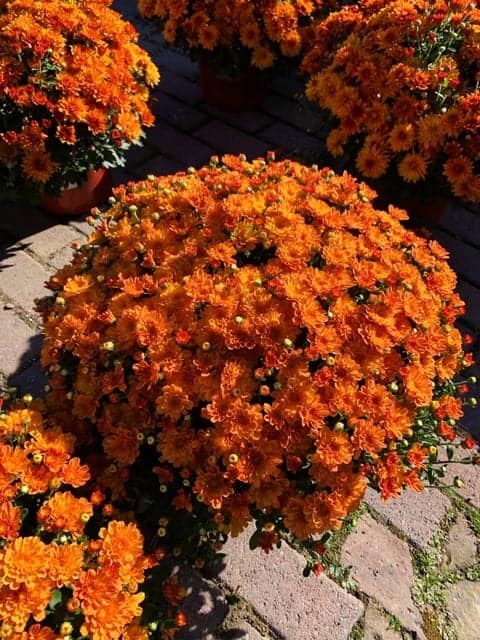Mums flowers: Fall’s finicky favorite. Discover why I love-hate growing chrysanthemums and how to make them last.
Nothing says fall quite like garden mums, am I right? They are bright, beautiful, and instantly evoke the cozy autumn feels.
But mums can be frustrating for many gardeners and home decorators because they don’t last long, they dry out easily, and some don’t return the following year. The key to success with mums is to change your perspective on how you grow them.
(Posts on stacyling.com may contain affiliate links. Click HERE for full disclosure.)
All About Mums Flowers
Chrysanthemums are undeniably pretty fall flowers, readily available everywhere from nurseries and big box stores to markets and florists. There’s a vast array of garden mum varieties to choose from, offering a wide range of colors, heights, flower sizes, shapes, and bloom times.
- USDA Hardiness Zones: Most garden mums are winter hardy in USDA Zones 5-9.
- Light Conditions: Chrysanthemums thrive in full sun (6-8 hours per day). They can tolerate some shade, but flowering may be reduced.
- Soil Requirements: They prefer well-draining, slightly acidic soil with a pH of 6.0 to 6.5
- Bloom Color and Bloom Time: Chrysanthemums boast a wide variety of bloom colors, including white, yellow, orange, red, pink, purple, and even bi-colored varieties. Their typical bloom time is in the fall, from late summer to early winter, depending on the variety and climate
Chrysanthemums thrive in full sun (6-8 hours per day) with ample water and fertilization. As perennials, they establish best when planted in spring, giving their roots time to develop. However, you can plant them anytime, provided you give them about six weeks before extreme weather hits.
Plant mums flowers in well-draining soil in a hole twice the size of the root ball, and mix in organic matter like compost and leaf mold. While I generally emphasize soil quality, chrysanthemums also benefit from balanced fertilizer during the growing season. It’s crucial to fertilize until they’re about to bloom, then stop and let the plant do its thing.
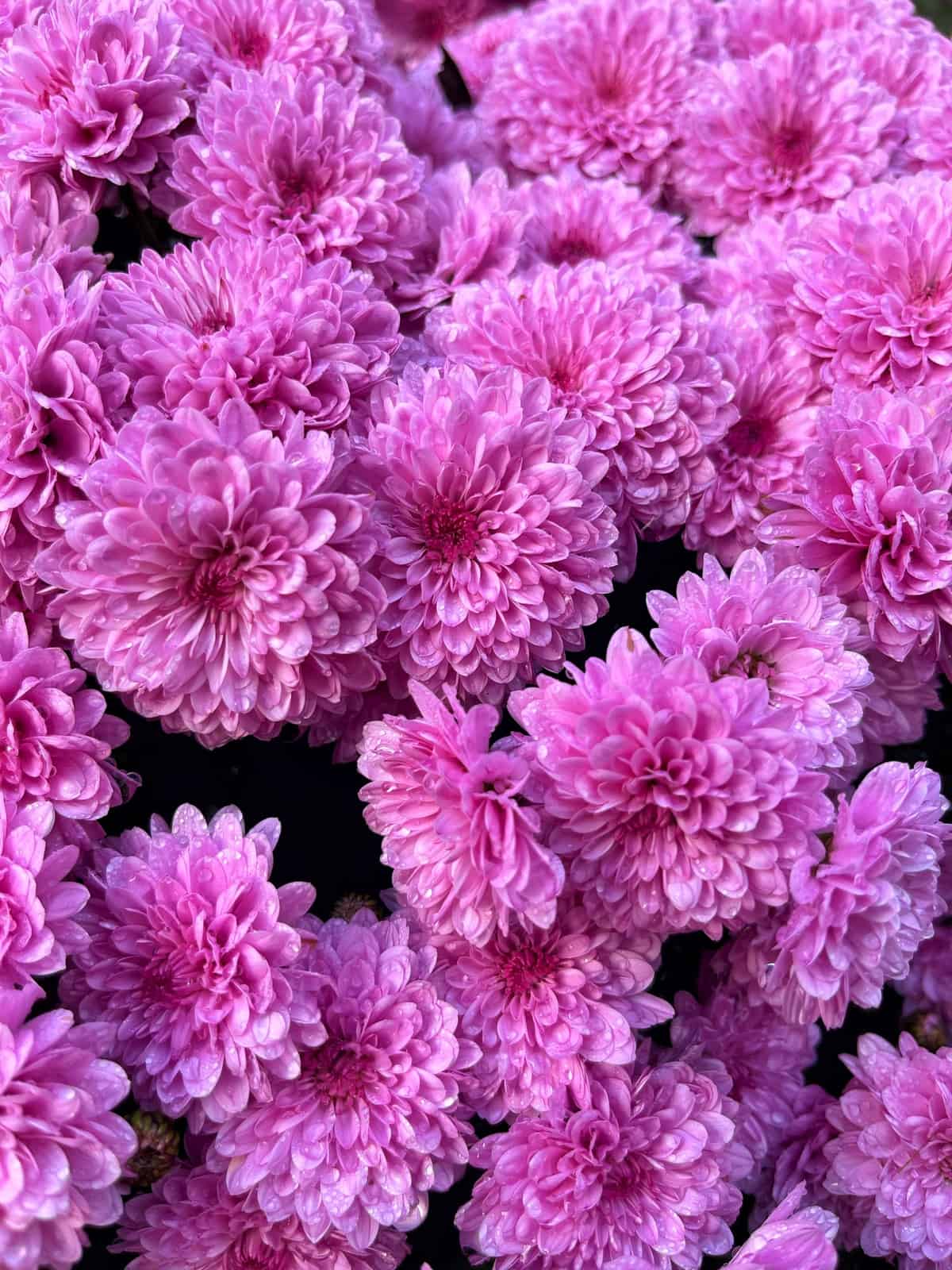
Common Pests and Diseases of Mums Flowers
Chrysanthemums can be susceptible to a few pests and diseases, including:
- Aphids: These tiny insects suck sap from the plant, causing stunted growth and distorted leaves. You can control them with insecticidal soap or neem oil, or by introducing natural predators like ladybugs.
- Powdery Mildew: This fungal disease appears as a white powdery coating on the leaves. To prevent it, ensure good air circulation around the plants and avoid overhead watering. If it occurs, treat it with a fungicide.
- Leaf Spot: This fungal disease causes brown spots on the leaves. Remove affected leaves and avoid overhead watering to prevent its spread.
- Rust: This fungal disease appears as reddish-brown pustules on the undersides of leaves. Remove affected leaves and improve air circulation to prevent rust.
Pruning and Deadheading Your Mums Flowers
- Pinching Back: As mentioned earlier, pinching back is essential for promoting bushier growth and more flowers. Pinch back the tips of young shoots when they are about 6 inches tall. Repeat this process a few times until mid-summer. I usually stop July 4.
- Deadheading: Deadheading, or removing spent flowers, encourages the plant to produce more blooms. Simply snip off the faded flowers just above a leaf or set of leaves.

Overwintering Mums Flowers
In colder climates (Zones 5 and below), chrysanthemums may need some protection to survive the winter. After the first hard frost, cut back the plants to about 6 inches tall. Mulch around the base of the plants with a thick layer of straw, leaves, or wood chips to insulate the roots. In spring, remove the mulch once the danger of frost has passed.
I’ve experienced about a 50% return rate of them returning and I have to say, I don’t care for them the following season so I prefer to save my garden space for other plants that give me more bang for my buck and grow them as annuals here in my zone 6b garden.
Propagating Mums Flowers
Chrysanthemums can be propagated through division or cuttings.
Cuttings: Take 4-6 inch cuttings from healthy stems in spring or early summer. Remove the lower leaves and dip the cut ends in the rooting hormone. Plant the cuttings in a moist potting mix and keep them in a warm, humid environment until they root.
Division: In spring, dig up the clump and carefully divide it into smaller sections, each with roots and shoots. Replant the divisions in well-prepared soil.
While it can be done, I recommend purchasing new plants instead of trying to propagate them. It’s just easier.

Are Mums Flowers Hard to Keep Alive?
Garden mums’ shallow root system makes them prone to drying out, especially in hot weather. Drought-stressed plants are less likely to survive winter than well-hydrated ones. So, monitor watering during dry spells; they may need daily watering in hot, arid conditions.
Planting in well-prepared, fertile soil with mulch or repotting in healthy potting soil with leaf mold and compost helps retain moisture.
While the “garden hack” of dunking mums in water before planting or decorating helps with initial hydration, it doesn’t prolong their life or bloom time. Replanting in good soil and consistent watering at the base is key. A drip irrigation system on a timer offers a hands-off approach.

It’s a Matter of Perspective When Growing Chrysanthemums
I love mums, but I’m not into the high maintenance they require for their limited bloom time. Most of us find them in stores in late summer/early fall, bred as fall decor. They can be perennial, but I treat them more like annuals. It’s easier, and leaves room in my garden for plants that reliably return.
How to Think Differently About Growing Chrysanthemums
Remember, fall mums are grown specifically for fall bloom, lasting only 4-6 weeks. They’re perennial, but not the best at it. I plant them yearly, not expecting them back, but because I love their look. They also dry out less in the ground than in containers.
Out of hundreds planted, only a handful have returned for me. So, my expectation for perennial return is low. There are other, easier fall plants that offer more.

Are Mums Flowers Annual or Perennial?
Technically perennial, but I consider them seasonal fall flowers, like poinsettias – more holiday plants than garden staples.
If your mums struggle, don’t blame yourself. They’re finicky and need lots of attention when first purchased. It’s the plant, not you. Adjust your expectations.
Do Mums Flowers Come Back?
They can, but I don’t rely on it. It’s a bonus. If they survive winter, you’ll see new growth at the base in early spring. Last year, maybe 10 out of 30 returned for me.

When to Buy Mums Flowers
Resist buying them in August/early September when you see them come out in nurseries, markets, and big box stories! They don’t handle summer heat well and only bloom for 4-6 weeks. The best time is mid-to-late September and even early October, depending on the weather.
Buy Mums Flowers with Intention
Consider your purpose. Are they for a party tomorrow, an event next week, or an impulse buy? Early purchases won’t last into October.
I usually wait until mid-late September, unless I need them earlier for a specific reason. If you buy early during hot weather, you’ve got to keep them well-hydrated!
Thus, if you purchase them in late August through early September on impulse, they won’t last well into October. I’m not telling you not to get them if you want them. But, if you want them to last through October, either plan on replacing them or hold off getting them for a few more weeks.
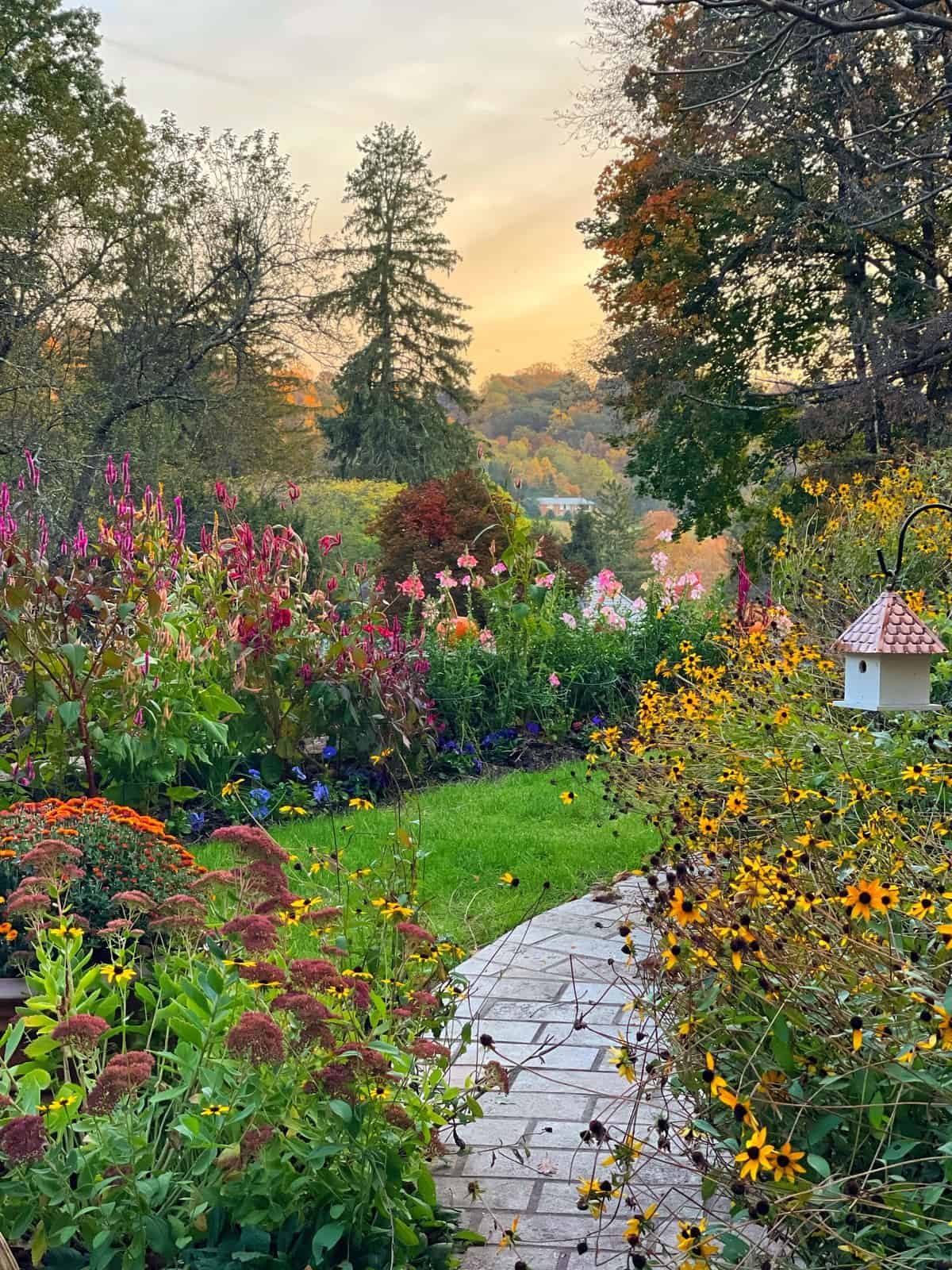
Timing Your Chrysanthemums Purchase
To avoid replacing mums prematurely, I delay buying them until mid-to-late September, carefully considering the weather. If New Jersey is experiencing hot, dry conditions, I postpone my purchase until those conditions improve.
The only exception is if I need mums for a specific event or early fall decorating. In those cases, I accept their potentially shorter lifespan or plan to replace them if needed.
Remember: If you buy mums early when it’s still hot, be prepared to water them diligently!
Choosing the Right Mums Plant For Your Fall Garden
- For immediate impact: Choose plants in full bloom. They won’t last as long or rebloom.
- For an event a week or more out: Choose a mix of blooms and buds. Water daily.
- For seasonal decor: Pick plants with more buds than blooms for longer-lasting color. Water daily to prevent drying out before blooming.
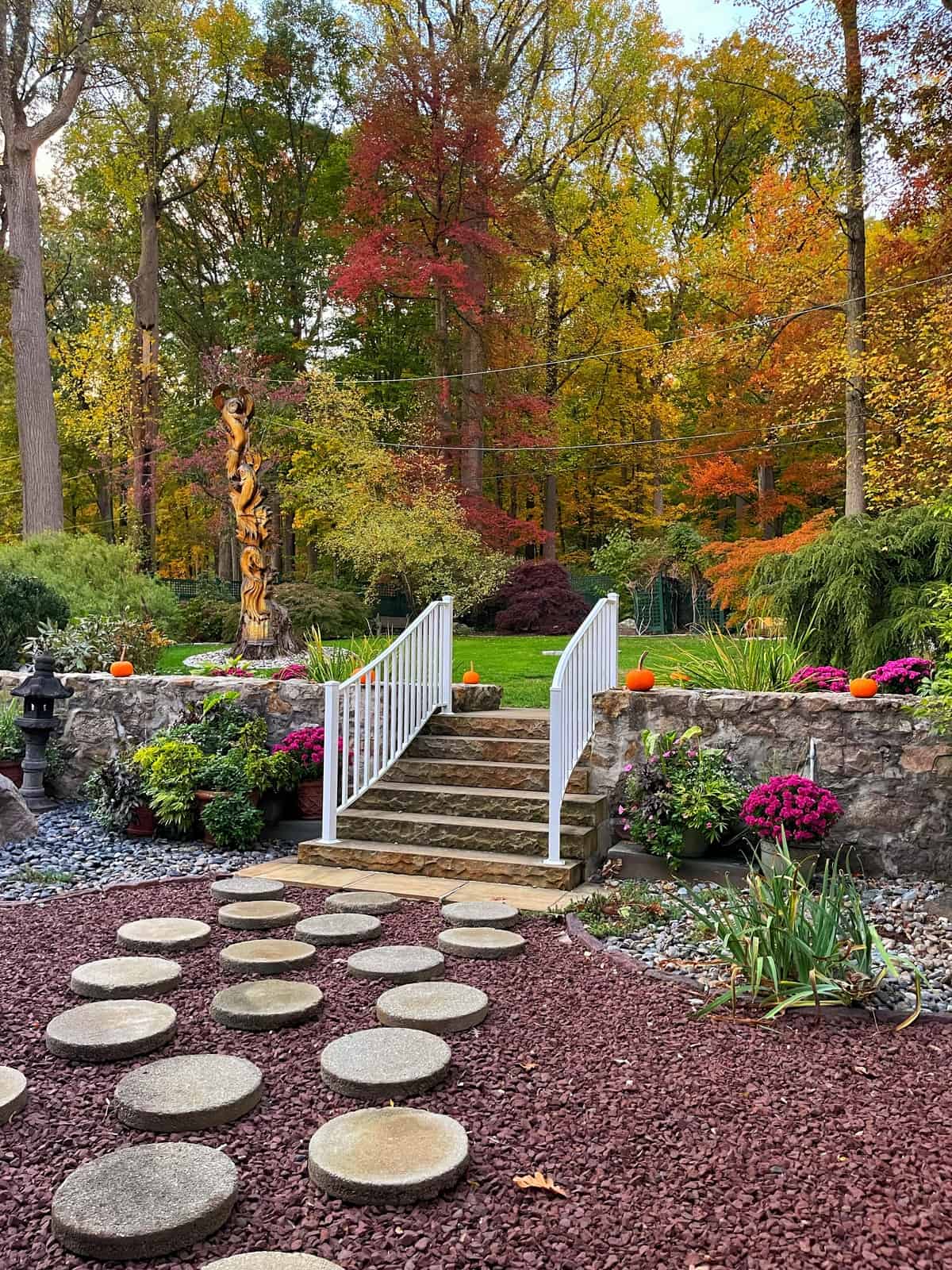
Chrysanthemums Care FAQs
- Do Chrystanthemums Like Sun or Shade? They prefer at least 6 hours of sun for optimal health and blooms but can tolerate shadier spots with fewer flowers. If it’s hot, move them to shade to prevent drying out and scorching.
- Do Chrysanthemums Repel Bugs? Yes, they contain pyrethrin, a natural insect repellent often used in insecticides. Some gardeners plant them specifically for pest control.
- Do Chrysanthemums Grow in Pots or in the Ground? Both! In-ground planting requires well-draining soil and sun. Potted mums need a large enough container with drainage holes and well-draining potting mix. The choice depends on your space and preferences.
- What is the Difference Between Garden Mums and Hardy Mums? There is no difference. Garden mums are hardy mums; nurseries just stopped using the term “hardy.”

Final Thoughts About Growing Chrysanthemums
Growing chrysanthemums can be rewarding, adding fall magic to your space. While not my favorite, I enjoy them yearly. Adjusting my expectations has led to greater success.
Remember, gardening is about experimenting and having fun. My easy plants might be different for you. So, get out there and discover what works best for you and your garden!
Have you had success growing chrysanthemums as perennials? Or do you prefer to treat them like annuals? Do you have any tips you’d like to share? I would love to hear about your experience in the comments below.
For more information about growing chrysanthemums in the home garden, please see this article from Penn State Cooperative Extension.
To drill down on more beginner gardening techniques and tips, please read these posts:
- Flower Gardening 101
- Growing a Cut Flower Garden for Beginners
- Container Garden Ideas for Beginners
- How to Start a Vegetable Garden
- Herb Gardening for Beginners
Thanks for stopping by the blog today!
Enjoy your day! xoxo

